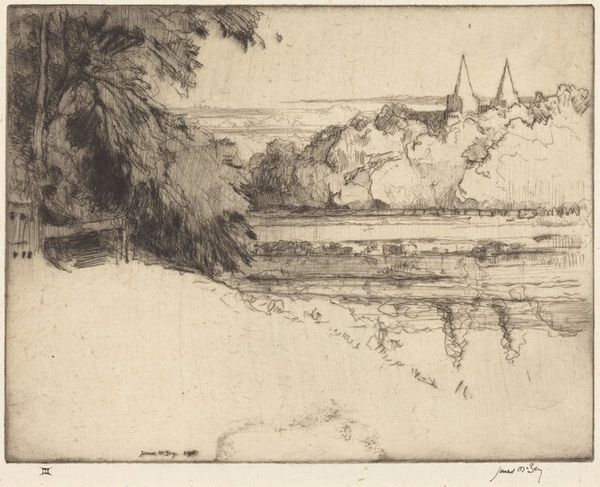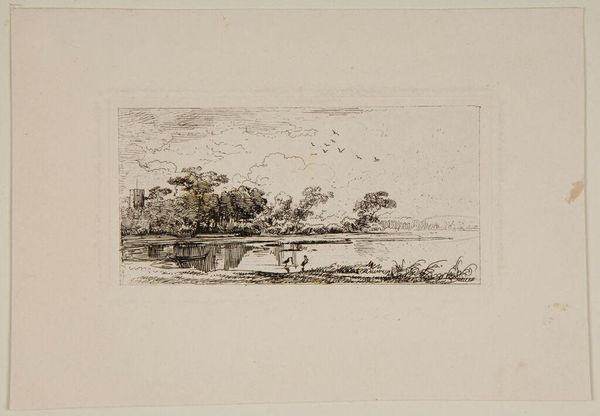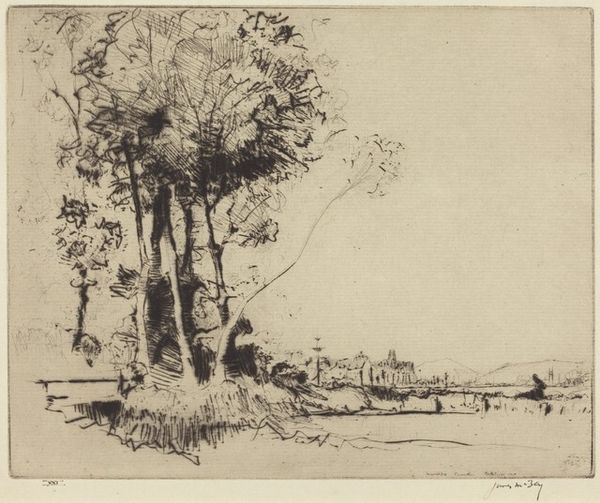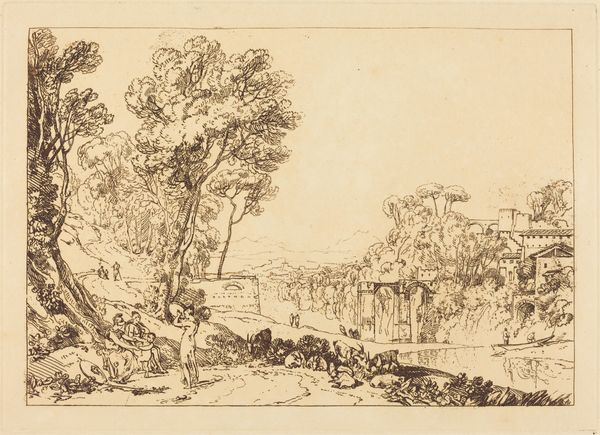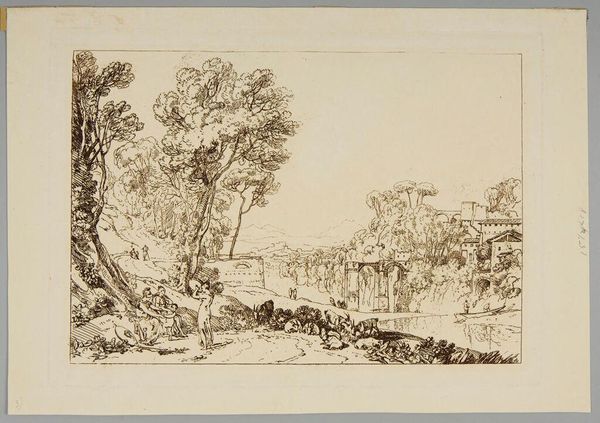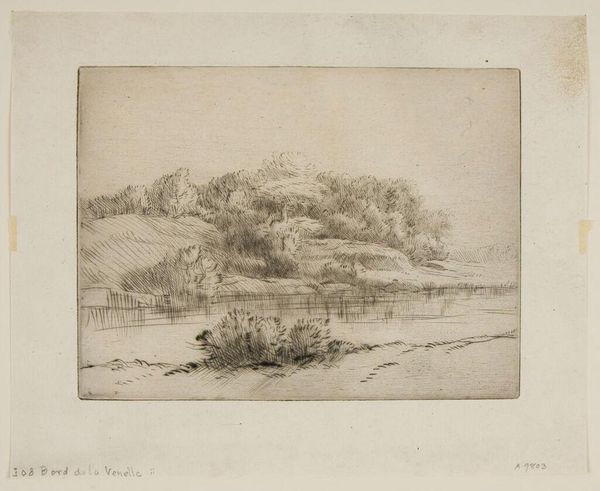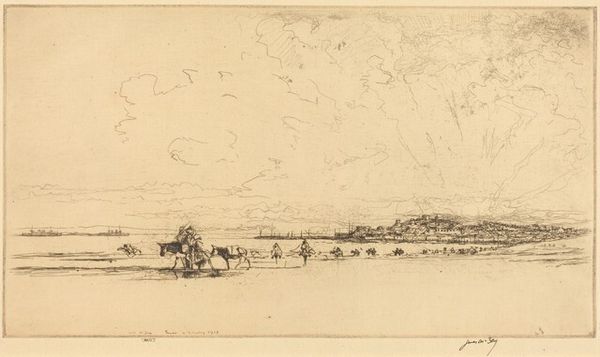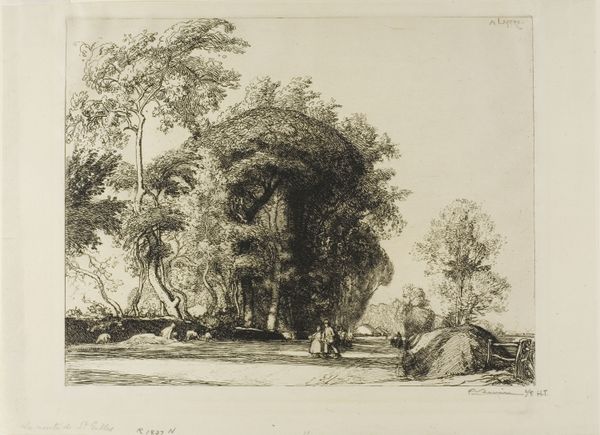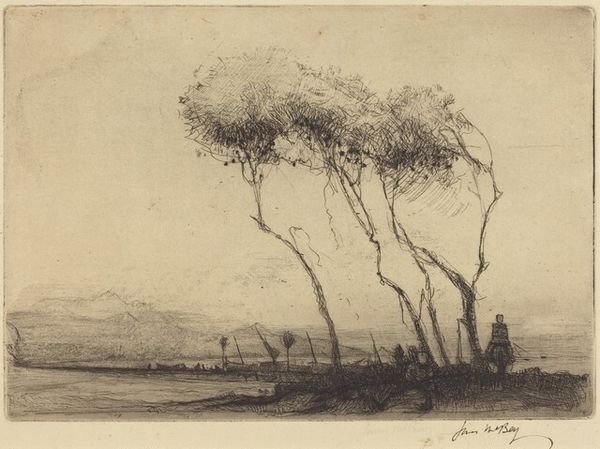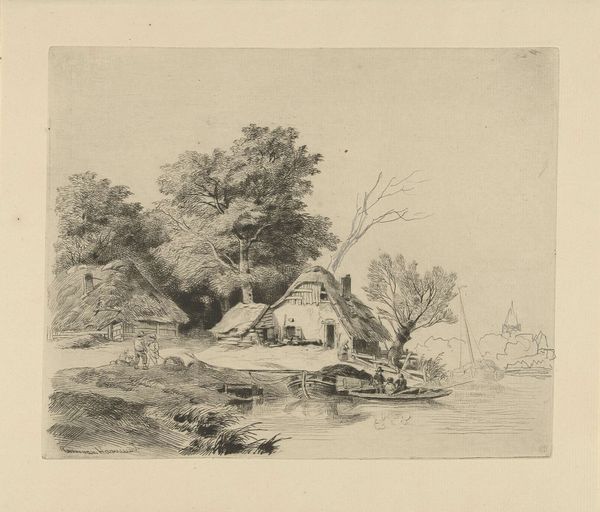
drawing, print, etching
#
drawing
#
ink drawing
# print
#
etching
#
landscape
#
etching
#
cityscape
#
realism
Copyright: National Gallery of Art: CC0 1.0
Editor: So this is "Old Machar Towers, No. 1", an etching by James McBey from 1911. The style seems almost nostalgic. It depicts a scene with a figure sitting on a bench under a tree, overlooking a cityscape. What do you see in this piece, and how do you interpret its historical context? Curator: The nostalgia you perceive is key. McBey created this in a period of intense social upheaval. Etchings like this allowed for a wider distribution of images, almost a democratizing of art, in a way that challenged the elitism of the traditional art world. But who is represented and who isn't? How does McBey, likely part of the privileged class, depict the changing cityscape, and for whom? Editor: So, it’s more than just a pretty picture. It’s reflecting the social tensions of the time. Does the inclusion of the towers have some religious connotation? Curator: Absolutely. Consider the rise of secularism and challenges to traditional authority. Placing these religious structures in the background amidst what seems like an ordinary scene raises questions about the role of the church and tradition in a rapidly changing society. It's interesting, isn’t it, to see how McBey positions the lone figure between nature and the burgeoning industrial landscape. This reveals potential anxiety from urban life, perhaps suggesting a turn to quiet observation as a means of resisting capitalist forces. Editor: That is not how I expected to see this, but I understand now it is both beautiful and filled with tensions. Curator: Exactly! Art often speaks volumes about the socio-political landscape from which it emerges. Understanding these undercurrents provides an added layer of richness to our viewing experience.
Comments
No comments
Be the first to comment and join the conversation on the ultimate creative platform.
